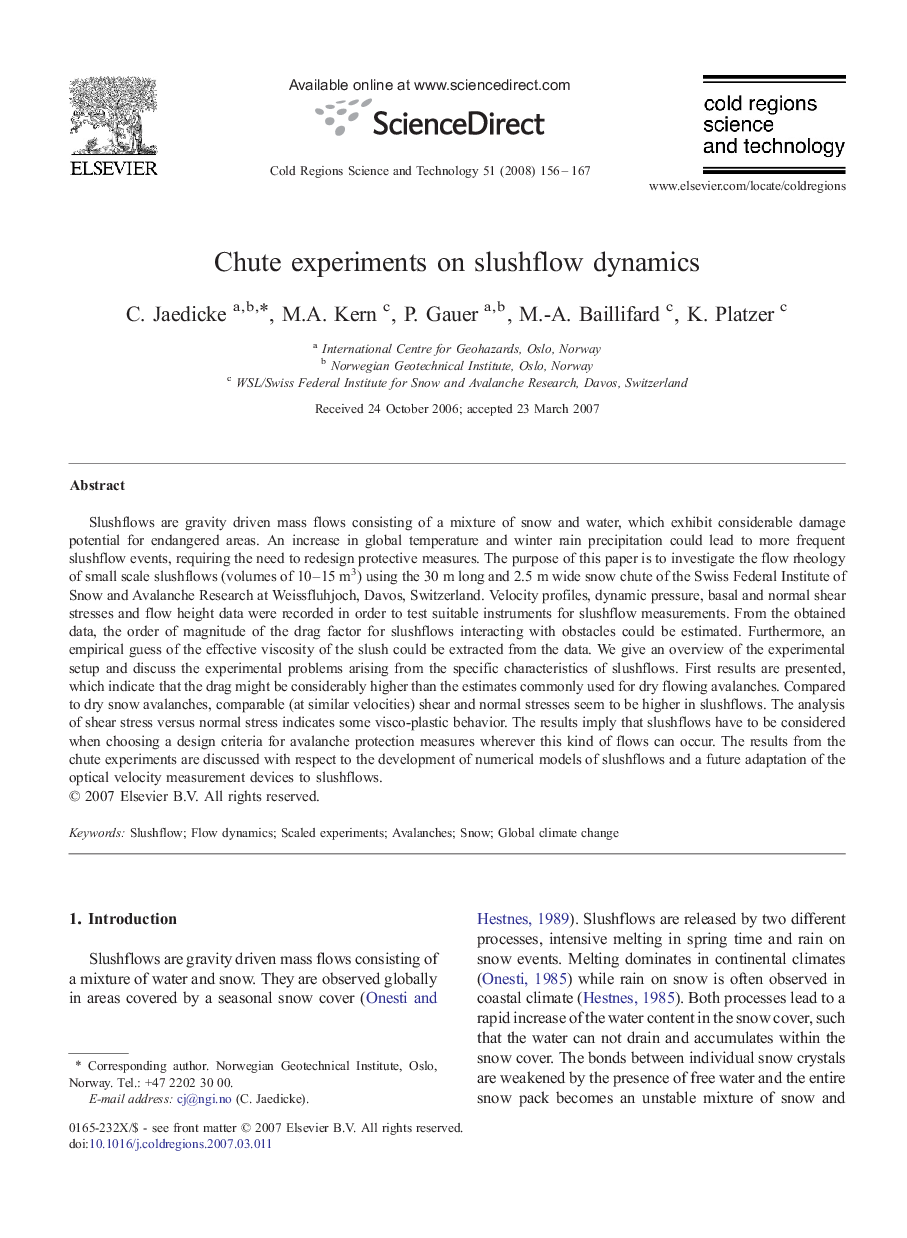| Article ID | Journal | Published Year | Pages | File Type |
|---|---|---|---|---|
| 4676568 | Cold Regions Science and Technology | 2008 | 12 Pages |
Slushflows are gravity driven mass flows consisting of a mixture of snow and water, which exhibit considerable damage potential for endangered areas. An increase in global temperature and winter rain precipitation could lead to more frequent slushflow events, requiring the need to redesign protective measures. The purpose of this paper is to investigate the flow rheology of small scale slushflows (volumes of 10–15 m3) using the 30 m long and 2.5 m wide snow chute of the Swiss Federal Institute of Snow and Avalanche Research at Weissfluhjoch, Davos, Switzerland. Velocity profiles, dynamic pressure, basal and normal shear stresses and flow height data were recorded in order to test suitable instruments for slushflow measurements. From the obtained data, the order of magnitude of the drag factor for slushflows interacting with obstacles could be estimated. Furthermore, an empirical guess of the effective viscosity of the slush could be extracted from the data. We give an overview of the experimental setup and discuss the experimental problems arising from the specific characteristics of slushflows. First results are presented, which indicate that the drag might be considerably higher than the estimates commonly used for dry flowing avalanches. Compared to dry snow avalanches, comparable (at similar velocities) shear and normal stresses seem to be higher in slushflows. The analysis of shear stress versus normal stress indicates some visco-plastic behavior. The results imply that slushflows have to be considered when choosing a design criteria for avalanche protection measures wherever this kind of flows can occur. The results from the chute experiments are discussed with respect to the development of numerical models of slushflows and a future adaptation of the optical velocity measurement devices to slushflows.
